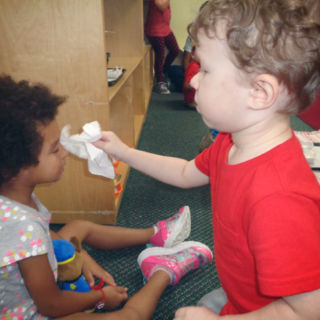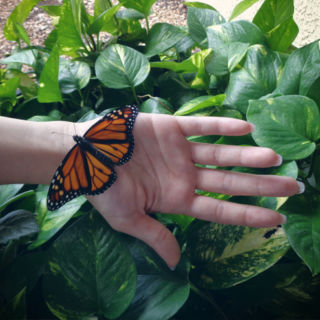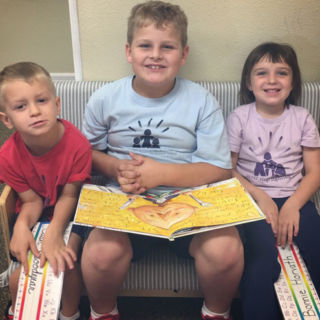
Our Montessori children have a great love for books. They joyfully gaze at each page, anticipating the next. They read individually, in pairs and in groups. They love to be read to, and younger children especially appreciate when older classmates read to them. It is a beautiful sight to observe children reading together!
The skill of reading does not come naturally, but takes great effort and patience. Unlike spoken language that children develop spontaneously and subconsciously, written language requires a process of linking the phonetic sound to the appropriate letter, and blending sounds together into words.
The interdependence of speaking, reading and writing cannot be overemphasized. The three skills are mutually reliant on the other. Young children need a rich verbal environment; speaking to them in clear language, reading to them and allowing them to speak their needs. Teachers commonly say to children, “Use your words” for a reason. As parents and teachers, we should communicate with the goal of expanding our children’s vocabulary and comprehension.
Writing generally follows with children and the alphabet, and usually precedes reading. In the classroom, children learn to write their name, work with the sandpaper letters and manipulate the movable alphabet. Associating the phonetic sound with each letter is the key.
Once phonetic sounds are mastered, words families are taught by the teacher modeling the reading practice (through “encoding” or blending sounds together and “decoding” breaking words into sounds).
The process flows in order from sounds, letters, words and then sentences.
“It is important that a child is read to at least once a day if possible for about 20 minutes, not necessarily continuously (especially for younger children) but accumulated.”
For more information on reading in Montessori visit www.montessoriforeveryone.com “How Do Children Learn to Read”



